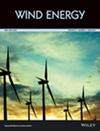基于波浪集和主动采样定向CFD模拟的海上风力机单桩基础全非线性水动力载荷统计建模
IF 3.3
3区 工程技术
Q3 ENERGY & FUELS
引用次数: 0
摘要
由于波浪-结构非线性相互作用的重要影响,准确确定水动力统计数据对于包括海上风电基础在内的海上工程结构设计至关重要。然而,获得精确的负载统计数据通常涉及计算密集的模拟。此外,由于所涉及的固有不确定性,使用当前实践的统计估计受到正在进行的讨论的影响。为了应对这些挑战,我们提出了一种新的机器学习框架,该框架利用数据驱动的代理建模来预测单桩基础上的水动力载荷,同时减少对昂贵的模拟的依赖,并促进载荷统计重建。与传统的建模方法相比,我们的方法的主要优点是显著减少了评估时间。我们的框架的新颖之处在于它有效地构建了代理模型,利用高斯过程回归机器学习技术和贝叶斯主动学习方法来顺序采样波浪事件,有助于准确预测极端水动力。此外,谱传输技术结合了静态波和极端波的计算流体动力学(CFD)结果,进一步降低了数据要求。本研究的重点是降低随机不规则波浪事件及其相关水动力时间序列的维数。虽然降维是线性的,但高斯过程回归成功地捕获了高阶相关性。此外,我们的框架结合了内置的不确定性量化功能,便于使用传统CFD工具进行有效的参数采样。本文提供了全面的实现细节,并证明了我们的方法在提供可靠的水动力载荷统计数据方面的有效性,同时克服了与经典建模方法相关的计算成本限制。本文章由计算机程序翻译,如有差异,请以英文原文为准。
Statistical modeling of fully nonlinear hydrodynamic loads on offshore wind turbine monopile foundations using wave episodes and targeted CFD simulations through active sampling
Abstract Accurately determining hydrodynamic force statistics is crucial for designing offshore engineering structures, including offshore wind turbine foundations, due to the significant impact of nonlinear wave–structure interactions. However, obtaining precise load statistics often involves computationally intensive simulations. Furthermore, the estimation of statistics using current practices is subject to ongoing discussion due to the inherent uncertainty involved. To address these challenges, we present a novel machine learning framework that leverages data‐driven surrogate modeling to predict hydrodynamic loads on monopile foundations while reducing reliance on costly simulations and facilitate the load statistics reconstruction. The primary advantage of our approach is the significant reduction in evaluation time compared to traditional modeling methods. The novelty of our framework lies in its efficient construction of the surrogate model, utilizing the Gaussian process regression machine learning technique and a Bayesian active learning method to sequentially sample wave episodes that contribute to accurate predictions of extreme hydrodynamic forces. Additionally, a spectrum transfer technique combines computational fluid dynamics (CFD) results from both quiescent and extreme waves, further reducing data requirements. This study focuses on reducing the dimensionality of stochastic irregular wave episodes and their associated hydrodynamic force time series. Although the dimensionality reduction is linear, Gaussian process regression successfully captures high‐order correlations. Furthermore, our framework incorporates built‐in uncertainty quantification capabilities, facilitating efficient parameter sampling using traditional CFD tools. This paper provides comprehensive implementation details and demonstrates the effectiveness of our approach in delivering reliable statistics for hydrodynamic loads while overcoming the computational cost constraints associated with classical modeling methods.
求助全文
通过发布文献求助,成功后即可免费获取论文全文。
去求助
来源期刊

Wind Energy
工程技术-工程:机械
CiteScore
9.60
自引率
7.30%
发文量
0
审稿时长
6 months
期刊介绍:
Wind Energy offers a major forum for the reporting of advances in this rapidly developing technology with the goal of realising the world-wide potential to harness clean energy from land-based and offshore wind. The journal aims to reach all those with an interest in this field from academic research, industrial development through to applications, including individual wind turbines and components, wind farms and integration of wind power plants. Contributions across the spectrum of scientific and engineering disciplines concerned with the advancement of wind power capture, conversion, integration and utilisation technologies are essential features of the journal.
 求助内容:
求助内容: 应助结果提醒方式:
应助结果提醒方式:


